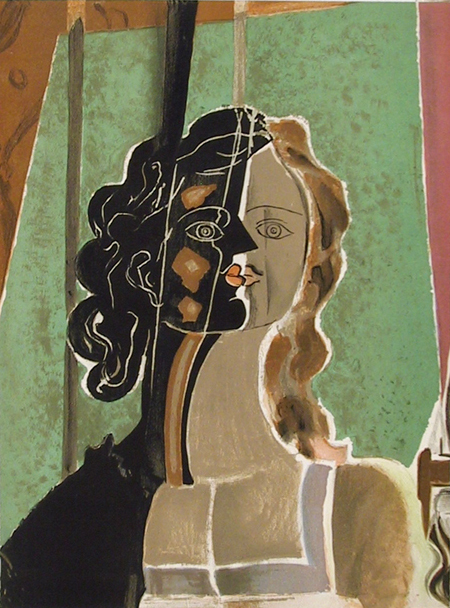Jimi Hendrix was a tough act to follow under the best of circumstances. But to follow him onstage after midnight in front of a crowd of more than half a million people that had been setting fires and throwing bottles at the stage seemed like an impossible task for a poet with an acoustic guitar and a gentle band of backing musicians. Yet Leonard Cohen turned the volatile situation at the 1970 Isle of Wight Festival into one of the most magical performances of his career.
A little piece of land four miles off the southern coast of England, the Isle of Wight was host to three great music festivals from 1968 to 1970. The last of these was something of a cross between Woodstock and Altamont: flower power with an undercurrent of menace. Like the Woodstock festival the year before, the 1970 Isle of Wight festival was crashed by thousands of unpaying fans.
Headliners for the five-day festival included Hendrix, Miles Davis, the Who and the Doors. By the time Cohen appeared–near the very end of the rainy final night–the atmosphere had become dangerous. During the Hendix performance, someone threw a flare onto the top of the stage and set it on fire. Journalist Sylvie Simmons describes the scene in her new book, I’m Your Man: The Life of Leonard Cohen:
Tension had been rising at the festival for days. The promoters had expected a hundred and fifty thousand people but half a million more turned up, many with no intention of paying. Even after the promoters were forced to declare it a free festival, ill will remained. During a set by Kris Kristofferson, bottles were thrown and he was booed offstage. “They were booing everybody,” says Kristofferson. “Except Leonard Cohen.”
As Cohen and his producer and keyboard player Bob Johnston stood watching the mayhem during Hendrix’s performance, Cohen stayed calm. “Leonard wasn’t worried,” Johnston told Simmons. “Hendrix didn’t care and neither did we. Leonard was always completely oblivious to anything like that. The only thing that upset him was when they told him that they didn’t have a piano or an organ–I don’t know, someone had set them on fire and pushed them off the stage–so I couldn’t play with him. Leonard said, ‘I’ll be in the trailer taking a nap; come and get me when you’ve found a piano and an organ.’ ”
According to most accounts it was a little after two o’clock in the morning when Cohen took the stage. His backup band, or “Army,” included Johnston on keyboards, Charlie Daniels on fiddle and bass, Ron Cornelius on lead guitar and Elkin “Bubba” Fowler on banjo and bass, along with backup singers Corlynn Hanney, Susan Musmanno and Donna Washburn. Cohen had a glazed-over look in his eyes throughout the performance, the result of his taking the sedative Mandrax. “He was calm because of the Mandrax,” Johnston told Simmons. “That’s what saved the show and saved the festival. It was the middle of the night, all those people had been sitting out there in the rain, after they’d set fire to Hendrix’s stage, and nobody had slept for days.”
The historic performance was captured on film by Murray Lerner, who released it in 2009 as Leonard Cohen: Live at the Isle of Wight 1970. The film (above) includes the following songs from the show:
- Diamonds in the Mine
- Famous Blue Raincoat
- Bird on the Wire
- One of us Cannot be Wrong
- The Stranger Song
- Tonight Will be Fine
- Hey, That’s No Way to Say Goodbye
- Sing Another Song Boys
- Suzanne
- The Partisan
- Seems So Long Ago, Nancy
- So Long, Marianne (during closing credits)
Perhaps the most moving moment in the film comes at the beginning, when Cohen brings the massive crowd together by asking a favor: “Can I ask each of you to light a match,” Cohen says, “so I can see where you all are?” As Simmons puts it, “Leonard talked to the hundreds of thousands of people he could not see as if they were sitting together in a small dark room.” Or as filmmaker Lerner later said, “He mesmerized them. And I got mesmerized also.” Summing up the concert and the film, Simmons writes: “It was a brilliant performance. Lerner’s cameras captured Cohen’s commanding presence, hypnotist’s charm, and an intimacy that would seem unfeasible in such a vast, inhospitable space.”



